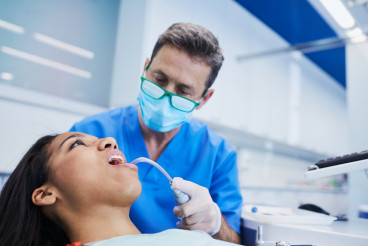Evaluation
The evaluation process plays a crucial role in identifying any existing or potential dental issues, allowing the dentist to develop an appropriate treatment plan tailored to the patient's individual needs.
How does the Evaluation work in dental treatments?
The evaluation typically begins with a thorough review of the patient's medical and dental history. The dentist will gather information about any previous dental treatments, oral hygiene habits, dietary patterns, and any underlying medical conditions that may impact the patient's oral health. This information helps the dentist understand the patient's overall health status and identify any factors that may contribute to or exacerbate dental problems.
Next, the dentist will conduct a visual examination of the patient's teeth, gums, and surrounding structures. This involves using a small mirror and probe to carefully inspect the surfaces of the teeth, looking for signs of decay, fillings, cracked or worn enamel, and any abnormalities in the gum tissue. The dentist may also use specialized tools, such as a periodontal probe, to measure the depth of the spaces between the teeth and gums, which can indicate the presence of gum disease.
In addition to the visual examination, the dentist may perform a series of diagnostic tests, such as dental X-rays. These radiographic images provide a detailed view of the teeth, bones, and other structures within the oral cavity that are not easily visible during the visual examination. The X-rays can help the dentist detect early signs of cavities, evaluate the health of the roots and supporting bone, and identify any other underlying issues.
The dentist may also use specialized instruments to assess the patient's bite, or occlusion. This involves evaluating the way the upper and lower teeth come together when the patient bites down. Proper occlusion is essential for comfortable chewing and to prevent excessive wear or damage to the teeth.
During the evaluation, the dentist may also assess the patient's oral hygiene practices and provide guidance on proper brushing and flossing techniques. This helps the dentist understand the patient's current level of oral hygiene and identify areas where improvement may be needed.
Once the evaluation is complete, the dentist will discuss their findings with the patient and provide a comprehensive treatment plan. This plan may include recommendations for preventive measures, such as regular cleanings and fluoride treatments, as well as any necessary restorative or corrective procedures, such as fillings, crowns, or periodontal therapy.
The evaluation is a crucial step in maintaining overall oral health and ensuring that any dental issues are detected and addressed in a timely manner. By working closely with their dentist and following the recommended treatment plan, patients can improve their oral health and reduce the risk of more serious dental problems in the future.
Save on your personalized dental care plan with the dental auction service by
Dr. BestPrice today!


